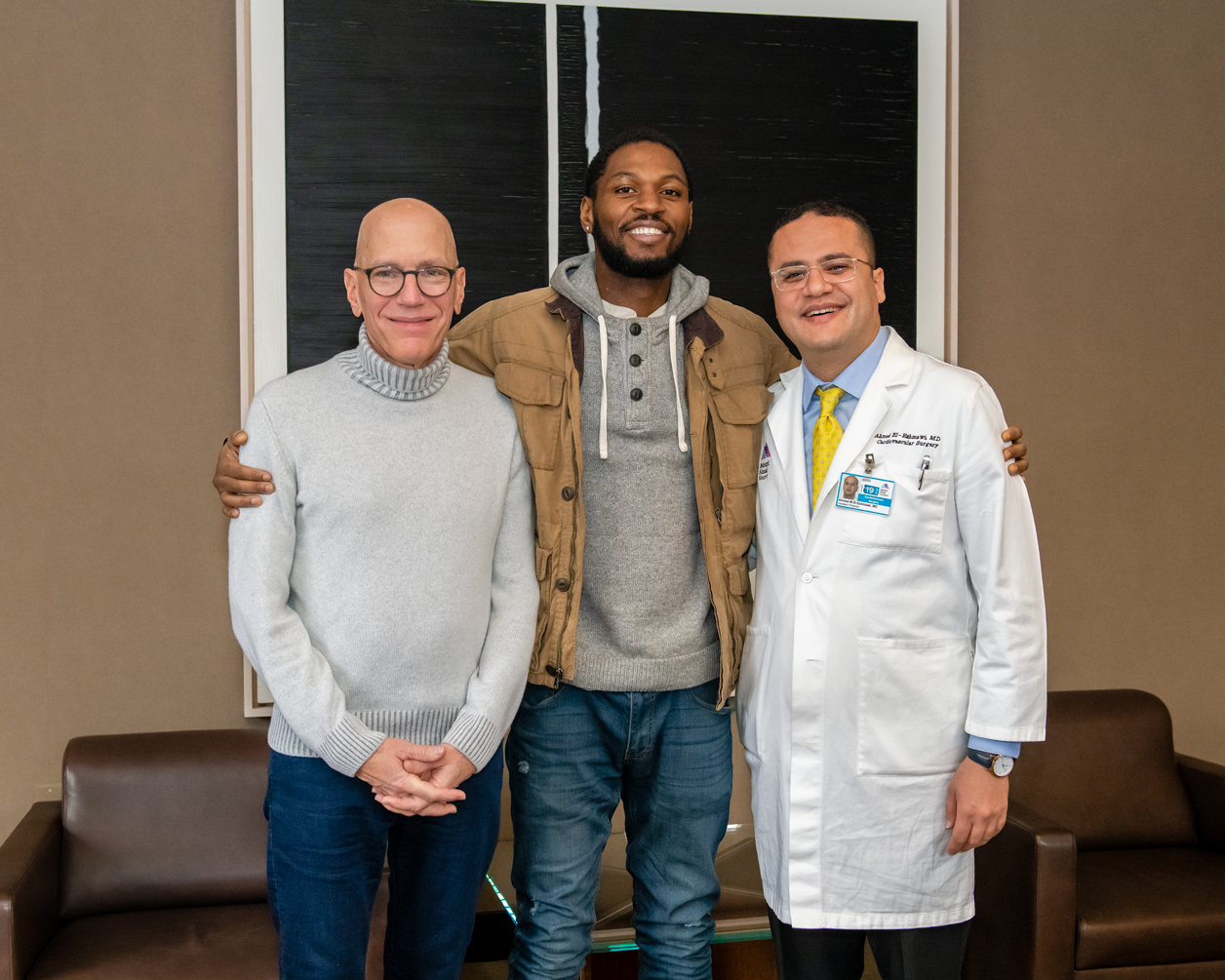Noel C.

When Noel C. felt his chest tightening one morning, he thought he was having an asthma attack – something the 35-year-old construction worker hadn’t experienced since childhood. Fortunately, his boss insisted he go to the ER, where an examination by Mount Sinai Beth Israel doctors, and subsequent tests, revealed congestive heart failure so severe that he was probably just weeks away from death.
“Just to hear ‘heart failure’ was really scary,” Noel said. Ultrasound imaging revealed that his heart had swollen to the size of a football – three times its normal size – and that his mitral valve was frozen in the open position. This completely disrupted his heart’s ability to pump, causing 70% of his blood to back up into his lungs. In turn, this regurgitation stretched his veins to the point of bursting, filled his body with fluids, and endangered his kidney.
With little time to lose, Noel was scheduled for surgery as soon as possible – in this case, the minimum time necessary to identify and stabilize a host of complicating factors. “This wasn’t just a high-risk case; this was a prohibitive-risk case,” said Dr. Dimosthenis Pandis, Assistant Professor of Cardiovascular Surgery at the Icahn School of Medicine at Mount Sinai, “Most hospitals would decline to do the surgery, saying that even if he survived the operation itself, the post-surgical mortality risk was too high.”
But Noel had gotten lucky. Cardiologists at Mount Sinai’s ER knew that the hospital’s heart surgeons were global leaders in mitral repair, and could undertake with a higher probability of success than most. Greater probability, however, is not the same thing as certainty, and the night before his surgery, Noel’s referring cardiologist called his surgeon, Dr. Ahmed El-Eshmawi, asking: would a total heart transplant be safer?
In complex cases, imaging can be inconclusive. Despite that, Dr. El-Eshmawi said he was confident in his diagnosis and felt that replacing the valve – not the entire heart – offered Noel the best chance of survival.
Philosophically, the Mount Sinai team’s approach is to repair heart valves whenever possible, rather than replace them. This is because valve repairs tend to last longer, lead to fewer post-operative complications, yield longer lives and obviate the need for a lifetime of blood-thinning medication. In Noel’s case, however, his mitral valve leaflets had suffered too many years of undetected degradation, and were beyond repair.
“It was one of the most enlarged hearts we’ve ever seen,” Dr. El-Eshmawi said. “His mitral regurgitation was worse than severe; it was torrential.”
To live, Noel would need an entirely new valve. Fortunately, Dr. El-Eshmawi, Dr. David Adams and their surgical team were able to use a biological valve rather than a mechanical valve. Because this replacement was adapted from natural tissue, Noel would not need a lifetime regimen of blood thinners. And while he would still likely need another replacement sometime in the next decade, the biological valve would also give surgeons in the future much greater flexibility in subsequent operations.
But first, he would have to survive his initial surgery, during which his heart would be stopped and his blood routed through a heart-lung machine, which pumps and oxygenates a patient’s blood during the operation. And because Noel’s heart tissue was so damaged, later restarting his heart – a muscle governed by highly synchronized electrical signals – would be intrinsically challenging. However, given his circumstances, Noel had little choice but to take the risk. “Do what you need to do,” he told Dr. El-Eshmawi.
Despite its danger, Noel’s surgery went smoothly. When he came off the heart-lung machine, his heart responded well to electrical stimulation, and sprang back into action. “I was 100% satisfied with the outcome,” Dr. El-Eshmawi said.
So was Noel. “The last thing I remember was laying on a stretcher talking with the anesthesiologist. Then I woke up with a tube down my throat, just glad to be awake and alive.” Within a few days, he went home to recuperate.
“When I first climbed stairs (after the operation), I felt weak but wasn’t short of breath,” Noel said. “I instantly knew that the doctors had really done something.”
Indeed. Against all odds, they had saved his life.